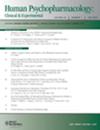Clozapine Once-Versus Multiple-Daily Dosing Regimen: A Single-Center, Retrospective, Cross-Sectional Study
Abstract
Background
Due to its short plasma half-life, clozapine is typically prescribed in a divided dosing regimen. Although once-daily dosing has proven effective in countries such as Japan, South Korea, Canada, and the United States, its adoption in real-world clinical practice in China remains unclear. This study aimed to compare patient characteristics, psychiatric symptoms, side effects, and plasma clozapine concentrations between once-daily and divided dosing regimens, and to determine the dosage required to achieve plasma levels of 350–600 ng/mL in the Chinese population.
Methods
We conducted a single-center, retrospective, cross-sectional study at Xi'an Mental Health Center, China, collecting data on clozapine-treated patients from March 2019 to March 2021.
Results
Most patients (80% of 198) in the Chinese cohort followed a divided-dose regimen in clinical practice. In the once-daily dosing group, the average plasma clozapine concentration was 158.75 ng/mL, with only 8% of patients reaching the therapeutic window. Conversely, patients on a divided dosing regimen had significantly higher plasma concentrations, averaging 373.34 ng/mL, with 28% within the therapeutic window. The psychiatric symptom remission rate did not differ significantly between the once-daily and divided-dosing groups (50.05% vs. 52.72%, p = 0.718); however, the divided-dosing group experienced a greater variety of adverse effects. Receiver operating characteristic analysis indicated that patients on multiple daily doses require a total daily clozapine dose of 150–250 mg to achieve the target plasma concentration, corresponding to a clozapine concentration-to-dose ratio of 1.4–2.4.
Conclusions
Chinese clinicians generally adhere to a divided dosing schedule for clozapine when the daily dose exceeds 50 mg. Further prospective longitudinal studies are warranted to evaluate whether once-daily dosing regimens can improve clinical outcomes.

 求助内容:
求助内容: 应助结果提醒方式:
应助结果提醒方式:


